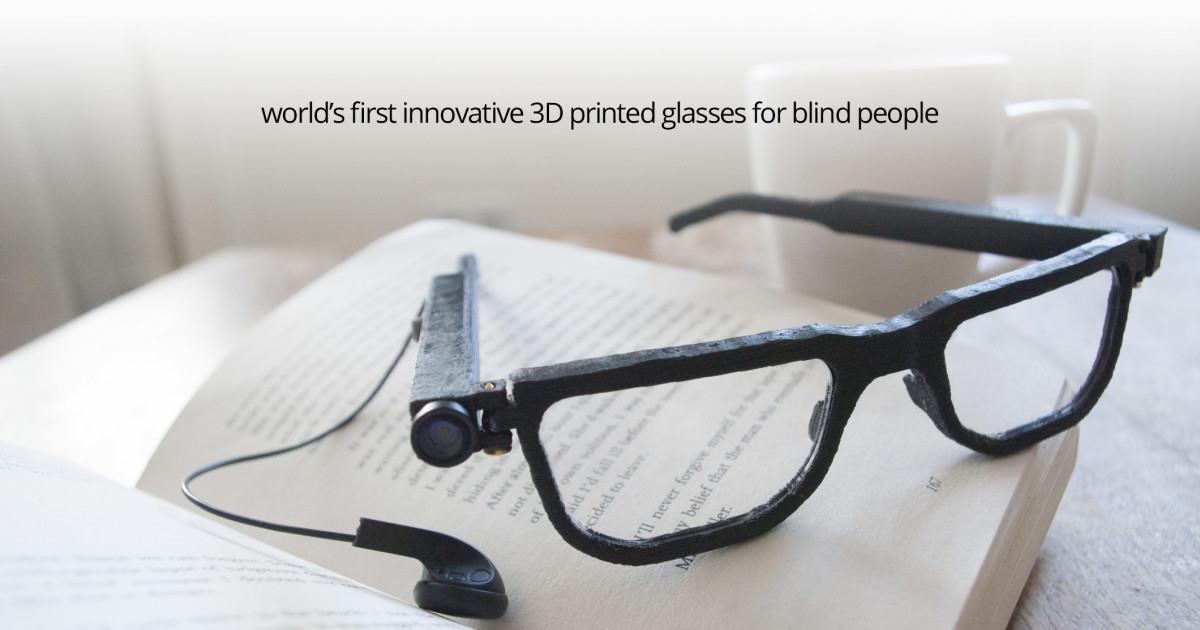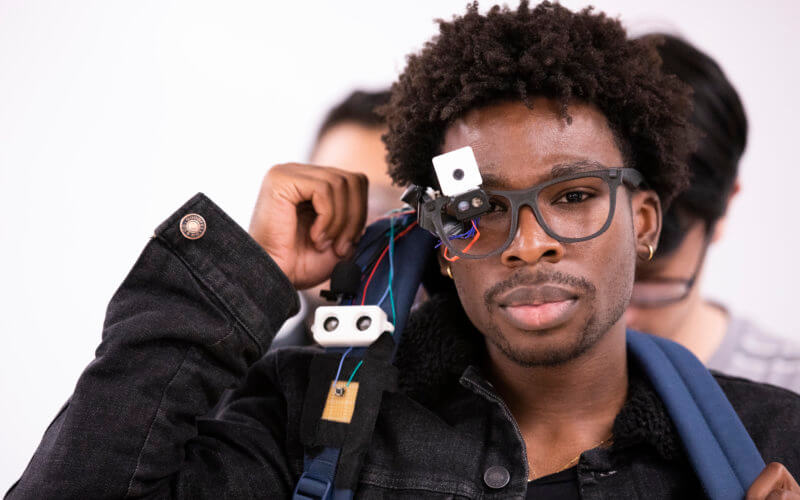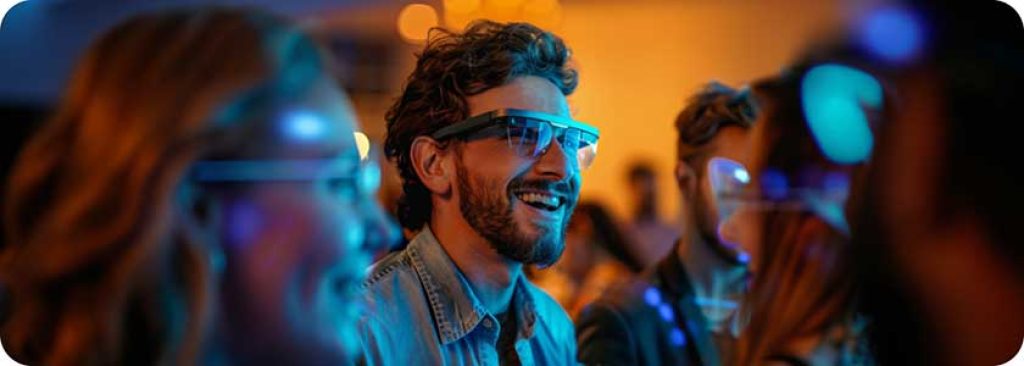Enhancing Availability With Assistive Modern Technology for the Blind
The combination of assistive technology for the blind represents an essential improvement in availability, basically modifying exactly how individuals navigate their atmospheres and involve with culture. From display visitors to ingenious smart walking canes, these tools not only improve independence however additionally advertise inclusivity in numerous balls of life. As we check out the diverse kinds of assistive devices and their concrete influences on everyday living, it becomes necessary to examine just how ongoing technological advancements are reshaping the landscape of assistance for the blind neighborhood. What effects do these advancements hold for the future of access?
Review of Assistive Technology
Assistive innovation refers to a variety of tools and software developed to enhance the capabilities of individuals with disabilities, consisting of those that are aesthetically damaged or blind. This innovation plays a crucial duty in advertising freedom and enhancing the high quality of life for individuals. By supplying alternative methods for accessing info and doing daily jobs, assistive innovation encourages people to navigate their environments more effectively.
The growth and application of assistive technology embrace a variety of concepts focused on cultivating ease of access. These principles include user-centered layout, which prioritizes the requirements and choices of the individual, and the assimilation of innovation into everyday tasks. Such innovations ensure that assistive devices are not only useful yet easy and additionally user-friendly to use.
In addition, assistive innovation encompasses a varied range of services, from low-tech alternatives like magnifiers to sophisticated innovations such as display visitors and Braille display screens. The continuous advancement of this area is driven by the need to address the special difficulties dealt with by people with aesthetic impairments (Wearable technology for low vision). As modern technology remains to advance, the potential for enhancing accessibility and promoting inclusivity stays appealing, ultimately adding to a much more equitable society

Kinds Of Assistive Devices
Many kinds of assistive tools are available to sustain people who are blind or aesthetically damaged, each made to resolve details needs and challenges. These tools can be extensively categorized into three main kinds: low-tech, mid-tech, and modern solutions.
Low-tech devices include items such as magnifiers, Braille labels, and responsive maps. These are relatively basic devices that boost the individual's capability to communicate with their setting without requiring complicated technology.
Mid-tech gadgets typically include advanced features, such as electronic magnifiers and mobile Braille note-takers. These devices can provide performances like speech outcome, enabling individuals to access information a lot more successfully.

Influence on Daily Living
The availability of different assistive devices significantly boosts the lifestyle for individuals who are aesthetically damaged or blind, affecting their day-to-day living in browse this site extensive methods. By integrating innovations such as screen readers, Braille displays, and audio description solutions into their regimens, users acquire better autonomy and freedom. These devices assist in access to details, making it possible for individuals to do daily jobs, such as reading emails, browsing public rooms, and appreciating media material.
Furthermore, assistive tools equip people to involve even more completely in social anonymous interactions and neighborhood activities. The capability to make use of smartphones geared up with accessibility attributes enables seamless communication and link with others. This connection cultivates a feeling of belonging and decreases feelings of isolation.
In expert settings, assistive innovation supports performance by permitting people to complete job tasks successfully. Tools like voice recognition software program and specialized magnification tools allow individuals to get involved in the workforce on equivalent ground with their sighted peers.

Advancements in Modern Technology
Recent technological improvements have considerably transformed the landscape of devices available for individuals who are aesthetically impaired or blind. The integration of synthetic intelligence (AI) and artificial intelligence has actually triggered applications that enhance navigation and object recognition. As an example, smart device apps can currently make use of AI to identify and define surroundings in real-time, providing individuals with valuable contextual info.
In addition, advancements in haptic innovation have caused the development of wise walking sticks equipped with sensors that identify obstacles and give tactile responses. This encourages users to navigate their setting with enhanced confidence and independence. Innovations in text-to-speech software and braille screens have enhanced the availability of electronic web content, allowing for seamless communication with different media.
Wearable modern technologies, such web as wise glasses, are additionally making strides in assisting aesthetic impairment. These gadgets can offer enhanced truth experiences, superimposing essential details onto the user's field of vision. Collectively, these improvements not only improve the quality of life for individuals that are blind but likewise promote greater inclusion in society. As innovation proceeds to progress, the potential for a lot more transformative devices stays on the perspective.
Future Trends and Innovations
As modern technology quickly advances, the future of assistive devices for people who are blind holds enormous assurance. Advancements in expert system (AI) and artificial intelligence are positioned to transform the way blind users connect with their settings. For instance, AI-driven applications are being developed to improve object acknowledgment, permitting individuals to identify and navigate their surroundings with better simplicity and accuracy.
Additionally, innovations in haptic responses innovation are allowing the development of responsive maps and navigation aids that supply real-time info via touch. These innovations not only improve movement however also foster independence. Additionally, wearable tools geared up with increased reality (AR) attributes are arising, using customers visual information with audio descriptions, thereby bridging the gap in between the physical and electronic globes.
Furthermore, the integration of wise home modern technology offers new possibilities for availability, allowing individuals to manage their living atmospheres through voice commands or smart device applications. As collaboration in between tech programmers and the blind area proceeds, the focus on user-centered design will certainly guarantee that future developments are tailored to satisfy the distinct requirements of this population (Wearable technology for low vision). The trajectory of assistive technology assures a much more inclusive and empowering future for individuals who are blind
Conclusion
In verdict, assistive modern technology plays a crucial role in boosting accessibility for individuals with visual problems. Constant innovations in modern technology and user-centered style guarantee that these tools provide properly to the special requirements of the blind area.
The assimilation of assistive technology for the blind represents an essential advancement in availability, fundamentally modifying how individuals browse their atmospheres and involve with culture.Assistive innovation refers to a range of tools and software designed to boost the abilities of individuals with disabilities, consisting of those that are blind or visually damaged. Wearable technology for low vision.As modern technology swiftly progresses, the future of assistive tools for people who are blind holds immense guarantee. The trajectory of assistive technology assures an extra inclusive and empowering future for people that are blind
In verdict, assistive technology plays a crucial role in enhancing access for people with visual impairments.